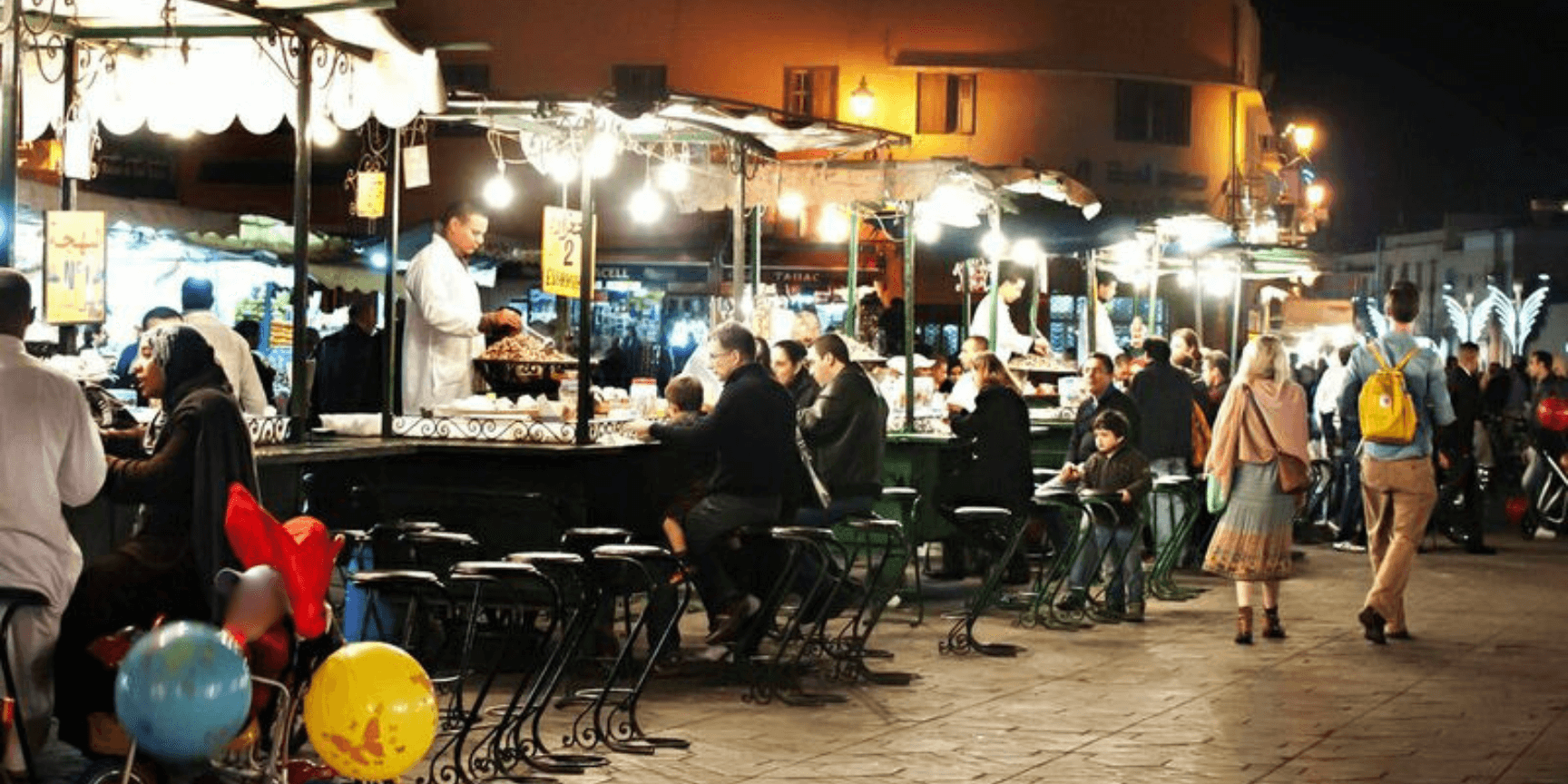Top 11 Moroccan Street Foods for Travelers.
While there are many reasons to visit Morocco, including its rich culture, history, diverse landscapes, and more, the country’s amazing food is undoubtedly a major draw for travelers. While enjoying dinners at your riad or dining in restaurants is a delightful experience, some of the most memorable culinary delights in Morocco can be found in its bustling streets.
Venturing out to try different street foods is a must during your trip to Morocco. From savory tagines and grilled meats to sweet pastries and refreshing fruit juices, the street food scene offers a tantalizing array of flavors and aromas that are sure to delight your taste buds.
Don’t be afraid to be adventurous and sample a variety of street foods during your travels. You may discover some unexpected favorites that will leave a lasting impression on your culinary journey through Morocco. So, be sure to embrace the opportunity to explore the vibrant street food culture and savor the authentic flavors of this enchanting country.
Table of Contents
1:Harira.
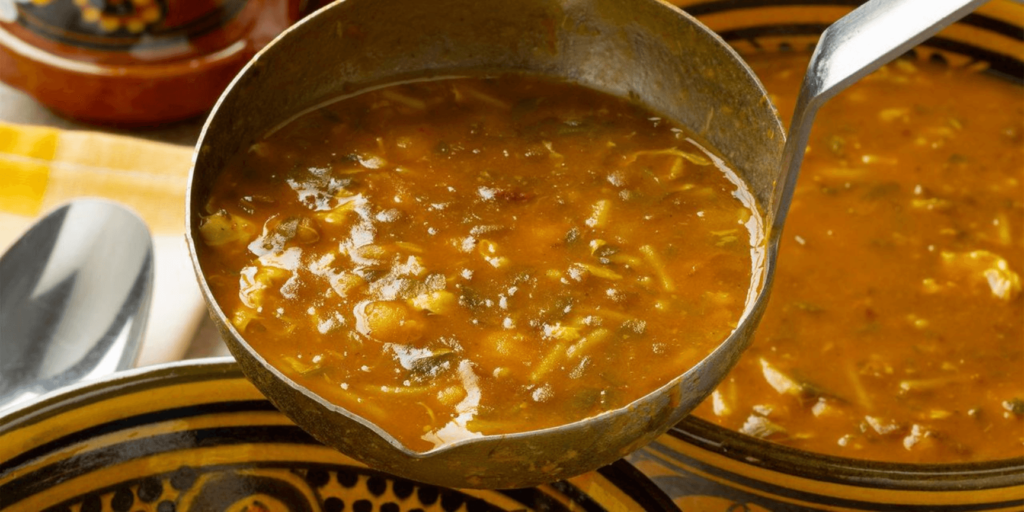
Harira is often regarded as the national dish of Morocco, with its origins tracing back to Berber tradition. It holds a special significance during the month of Ramadan, where it is commonly consumed as the first meal to break the fast. This hearty soup is crafted from a medley of ingredients, including tomatoes, lentils, chickpeas, rice, tender chunks of lamb, and an array of earthy spices such as turmeric and cinnamon, resulting in a flavorful and satisfying dish.
Readily available in restaurants and street-side carts throughout Morocco, harira is a popular choice for both locals and visitors alike. Whether enjoyed as a cheap dinner or a budget-friendly lunch option, this tomato-based soup offers a delightful combination of textures and flavors. Typically filled with chickpeas, lentils, noodles, and aromatic spices, harira provides a comforting and nourishing meal that can be savored throughout the year, not just during Ramadan.
Whether you’re seeking a quick and affordable meal or a taste of authentic Moroccan cuisine, indulging in a bowl or two of harira is sure to satisfy your appetite and leave you craving for more.
2: Merguez.
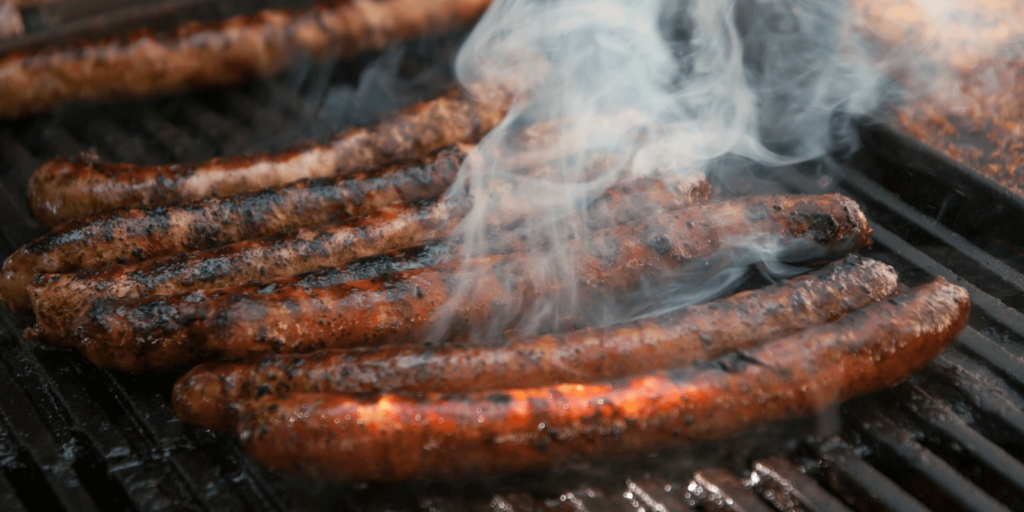
Merguez sausages are a staple in North African cuisine, known for their bold and spicy flavor profile, especially when compared to their milder European counterparts. These sausages are typically crafted from a mixture of lamb mince, beef mince, or a combination of both, but it’s the addition of harissa, paprika, and a blend of other spices that truly sets them apart.
Sold by street vendors lining the squares of local markets, merguez sausages are often stuffed into freshly baked khobz, traditional Moroccan flatbreads. They pair exceptionally well with a side of spicy tomato salsa-style dipping sauce, enhancing their rich and savory taste with an extra kick of flavor.

Whether enjoyed as a quick street food snack or incorporated into a larger meal, merguez sausages are a popular choice among locals and visitors alike for their robust and satisfying taste. So, be sure to indulge in these meaty morsels when exploring the vibrant culinary scene of Morocco.
3: Khobz.
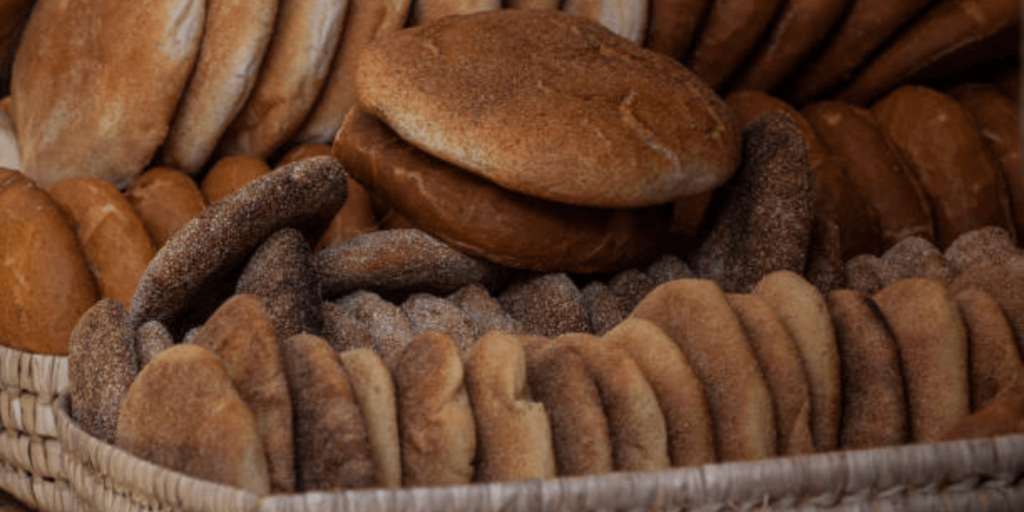
Khobz, a staple of Moroccan cuisine, is an essential accompaniment to tajines and Moroccan salads. It’s practically impossible to visit Morocco without sampling this delicious bread, unless you’re following a gluten-free diet. Khobz serves as both utensils and sustenance, allowing diners to scoop up flavorful dishes with ease.
While wandering through the bustling streets of the medina, you’ll often encounter stalls selling freshly baked khobz. These loaves of bread come in various types and textures, including wheat, white, fluffy, and flatter variations like Malawi, which tends to be greasier, or Kharsha, resembling cornbread.
For a quick and satisfying snack, consider picking up a fresh loaf of khobz from a street vendor. Some stalls may even offer it slathered with cream cheese (such as Kiri) or honey, providing a delightful blend of flavors and textures.
Whether enjoyed on its own or paired with other dishes, khobz is an integral part of Moroccan cuisine, offering a taste of tradition and a satisfying bite to eat while exploring the vibrant streets of Morocco’s cities and towns.
4: Orange Juice.

Moroccan orange juice consistently ranks among the must-try foods for visitors, and for good reason. Alongside roadsides, you’ll often encounter stalls piled high with fresh oranges. Take a moment to stop, and for less than 50 cents, you can enjoy a glass of freshly squeezed, frothy orange juice.
The vibrant flavor and refreshing taste of Moroccan orange juice make it a delightful treat for travelers exploring the streets and markets of Morocco.
5: Babbouche.

Babbouche, or boiled snails, may not initially appeal to all tastes, but this dish offers a burst of flavor that is quintessentially Moroccan. The molluscs are simmered in a savory soup infused with an array of aromatic herbs and spices, including aniseed, sweet and spicy pepper, bitter orange peel, and mint. Sold from carts in the bustling medinas, babbouche is ladled out by the bowlful, giving you the option to enjoy the flavorful broth or scoop out the snails with a toothpick.
Despite the strong aroma of cooking snails, the flavor is much milder and pleasantly surprising. Vendors typically serve Babbouche in small pottery bowls filled with hot snails and broth, along with a safety pin to extract the meat. Be sure to sip the broth at the end to complete your snack experience. And don’t forget to capture a few photos for social proof before indulging in this unique Moroccan culinary delight.
6: Shawarma.
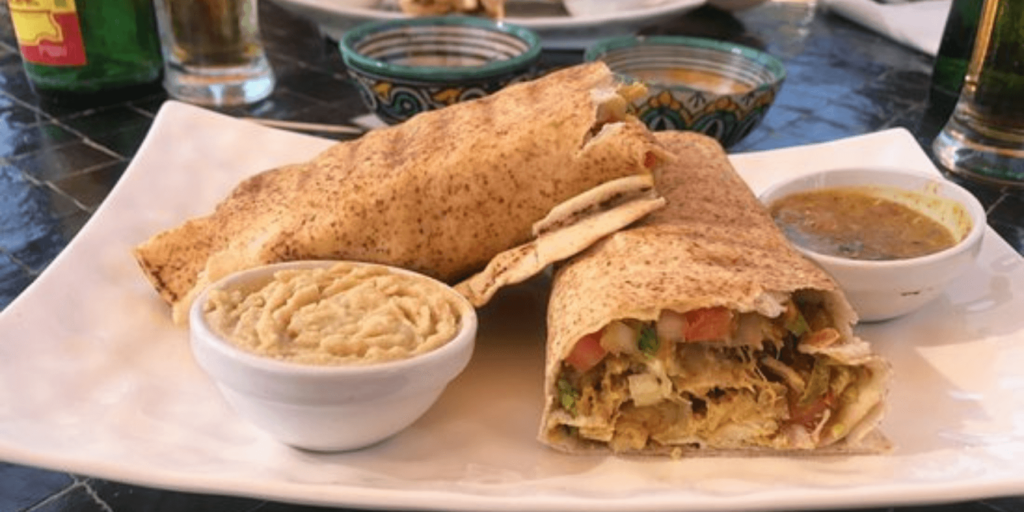
Shawarma, a Middle Eastern classic, is a culinary delight that may not be new to many travelers, but experiencing it in Morocco offers a unique twist. Moroccan vendors have perfected the art of shawarma, allowing you to choose from a variety of meats and decide whether you prefer it served on a plate, in a sandwich, or wrapped. Additionally, you’ll have the option to customize your shawarma with a range of delectable sides and toppings, including tahini, hummus, pickled vegetables, salad, and more.
Sampling shawarma in Morocco often leaves travelers wondering why this savory sandwich isn’t universally recognized as one of the greatest culinary creations. The aroma of seasoned meat cooking on the spit is enticing as your server expertly shaves off enough to fill your sandwich. Some vendors may even add spicy sauce or additional vegetables to enhance the flavor.

While indulging in shawarma, don’t miss out on trying other types of sandwiches sold on the streets, such as bologna sandwiches or egg sandwiches. With its irresistible flavors and endless possibilities for customization, shawarma is a must-try dish for anyone exploring the vibrant street food scene of Morocco.
7: Sardines.

Sardines are a common feature at small restaurants in Morocco, often served alongside Maakouda. Typically fried and accompanied by lemon slices, they may also be stuffed with a spicy tomato-flavored filling. When enjoying this inexpensive meal, be cautious of bones.
It may come as a surprise, but Morocco is the world’s largest exporter of sardines. As a result, you’ll find them readily available at market stalls across the country. This street food favorite is usually grilled or deep-fried and filled with a tangy chermoula relish, made from parsley, cumin, paprika, salt, and pepper. While delicious on their own, sardines also make a fantastic addition to sandwiches, providing a convenient and flavorful on-the-go snack.
8: Olives.
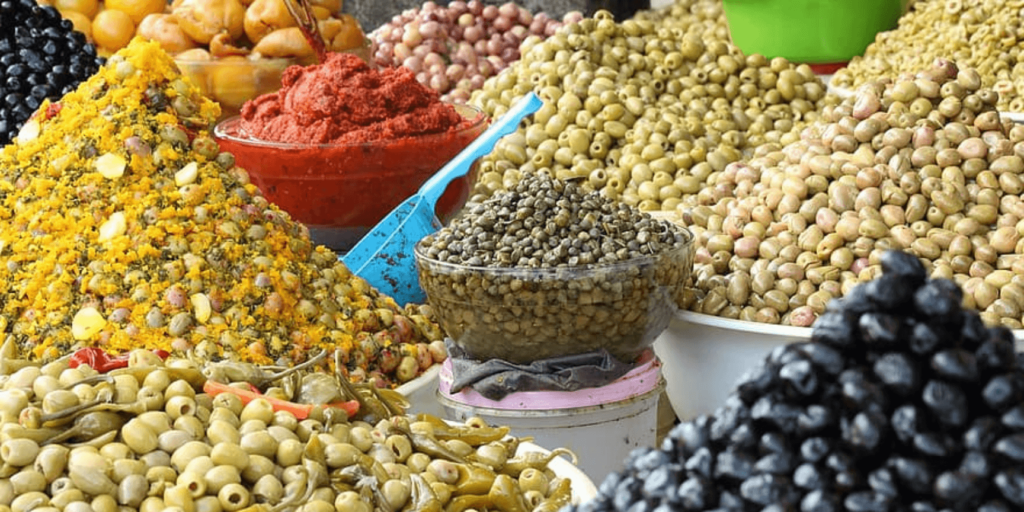
Moroccan olives are a vibrant and flavorful staple found throughout the country. They come in various colors and flavors, making them a versatile ingredient in traditional Moroccan cuisine as well as a popular snack. When visiting a Moroccan olive vendor, take your time to sample the different varieties before making a purchase. This is a common practice among Moroccans to ensure they select olives with flavors they enjoy, as some can be quite spicy.
With an array of flavors available, including lemon-infused or spicy varieties, Moroccan olives offer a delightful sensory experience. Their bright colors and enticing flavors may tempt you to pack some in your suitcase to enjoy at home. So, whether as an accompaniment to a traditional tagine or as a standalone snack, be sure to indulge in the diverse and delicious world of Moroccan olives during your visit to Morocco.
9: Maakouda.

When you visit a small hole-in-the-wall restaurant in Morocco, you’re likely to find Maakouda, also known as potato patties, displayed in the glass case. These patties are made from mashed or grated potatoes seasoned with garlic, cilantro, onions, and cumin, then fried to a golden perfection. Enjoy them as a filling in a sandwich or as a flavorful appetizer.
Found in hole-in-the-wall eateries throughout Morocco, Maakouda is a beloved specialty known for its deliciousness. These hearty fritters are a favorite among families, made by combining potatoes with garlic, cumin, onions, and coriander, then dipped in beaten eggs before frying. They’re versatile enough to serve as a satisfying snack or as a tasty side dish. Some Moroccans even use them as a filling for sandwiches, adding an extra layer of yumminess to their meals.
10: Msemmen.

Imagine if a crêpe and a soft flatbread had a delicious lovechild – that’s msemmen for you. Unlike the French pancake, this Maghrebi delicacy is crafted by meticulously working and folding thin layers of dough, rather than pouring batter. Cooked on a hotplate similar to an Indian tava, msemmen is fried until it achieves a delectable golden brown hue.
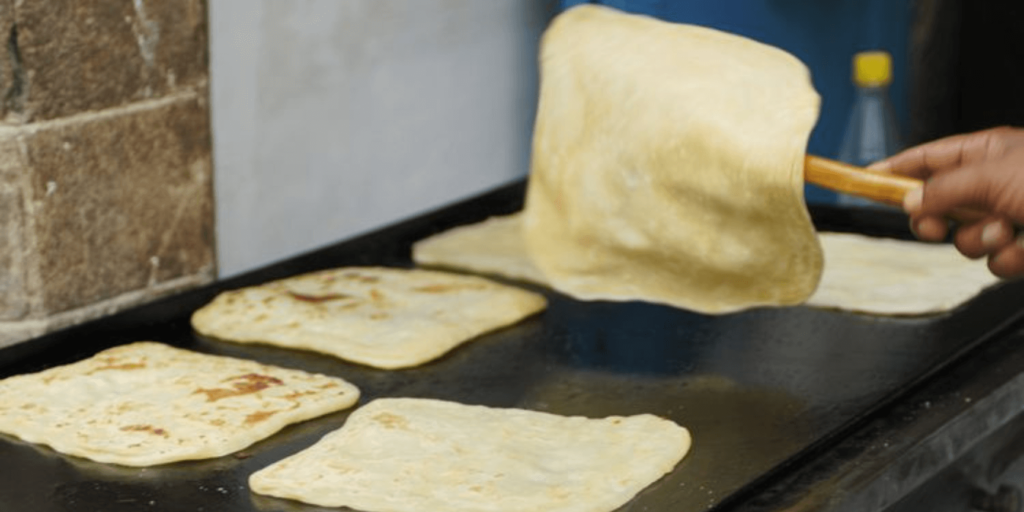
These versatile treats can be enjoyed in various ways. They can be stuffed with savory fillings such as kefta and onions, or spicy herbs and vegetables. Alternatively, they can be topped with butter, honey, or even cheese. Msemmen is a beloved snack enjoyed during the early morning and afternoon, often accompanied by a steaming cup of hot tea – a perfect pairing for a delightful Moroccan treat.
11: Sugared Peanuts.

Sugared peanuts are a beloved sweet snack enjoyed by many in Morocco. These peanuts are coated in a crunchy red sugary shell, offering a satisfying crunch with each bite. The enticing aroma of warm sugar cooking adds to the experience of indulging in this tasty treat. When purchasing sugared peanuts from a stall, the owner typically fills a small paper cone with them, but trust me, it won’t last long once you start snacking on them.
If your stomach is rumbling, why not embark on a culinary adventure in Morocco and sample some of these delicious street food treats for yourself on one of our many tours?
Don’t hesitate to branch out and explore the diverse street food offerings of Morocco. You might be pleasantly surprised by how much you enjoy them. From savory tagines and flavorful shawarmas to sweet sugared peanuts and aromatic mint tea, Morocco’s vibrant street food scene promises to tantalize your taste buds and leave you craving for more.
So, pack your bags, bring your appetite, and get ready to embark on a gastronomic journey through the colorful streets and bustling markets of Morocco.
Where can I find the best street food in Morocco?
In Morocco, street food is not confined to any particular neighborhood or city; it’s a ubiquitous part of the culinary landscape. However, some areas are renowned for their street food offerings, including:
Jemaa el-Fnaa, Marrakech: This bustling square comes alive at night with food stalls offering a variety of Moroccan delicacies, from grilled meats to steaming bowls of harira soup.
Essaouira: Along the coastal town’s narrow streets, you’ll find vendors selling fresh seafood, including grilled sardines and fried fish sandwiches.
Fez: The medina of Fez is a labyrinth of alleyways lined with food stalls serving up traditional specialties like camel meat skewers and spicy merguez sausage.
What vegetarian options are available in Moroccan street food?
While Moroccan cuisine is known for its meaty dishes, there are plenty of vegetarian options to be found among the country’s street food offerings. Some popular choices include:
Vegetable Tagine: A flavorful stew made with an assortment of seasonal vegetables, simmered in a fragrant broth infused with spices like cinnamon and turmeric.
Falafel: Fried chickpea patties seasoned with herbs and spices, typically served in a pita with salad and tahini sauce.
Batbout: Soft, chewy bread pockets filled with a variety of vegetarian fillings, such as grilled peppers, eggplant, and olives.
Is Moroccan street food safe to eat for tourists?
Yes, Moroccan street food is generally safe for tourists to enjoy, provided that certain precautions are taken:
Choose busy stalls: Opt for food stalls that are frequented by locals, as this is often an indicator of freshness and quality.
Observe hygiene practices: Look for vendors who maintain clean cooking surfaces and handle food with proper utensils.
Avoid tap water: When dining on the street, stick to bottled water or beverages that have been boiled or bottled.
How much should I budget for Moroccan street food?
Moroccan street food is known for being delicious and affordable, making it an excellent option for budget-conscious travelers. On average, you can expect to spend:
$2-5 per meal: Most street food dishes in Morocco are priced modestly, allowing you to sample a variety of flavors without breaking the bank.
$1-2 for snacks: Small bites like pastries, nuts, and dried fruits are readily available from street vendors at pocket-friendly prices.
$1-3 for beverages: Whether you prefer a refreshing glass of mint tea or a freshly squeezed orange juice, beverages in Morocco are typically priced affordably.
With such reasonable prices, exploring the vibrant world of Moroccan street food is not only a culinary adventure but also a budget-friendly one.
Are there any street food options suitable for people with dietary restrictions?
Yes, Moroccan street food offers options for people with various dietary restrictions, including gluten-free and dairy-free diets. Many dishes are naturally gluten-free, such as grilled meats, vegetable tagines, and seafood. Additionally, vendors are often accommodating and can make adjustments to accommodate specific dietary needs upon request.
Gluten-free options: Many traditional Moroccan dishes, such as grilled meats and vegetable tagines, are naturally gluten-free.
Dairy-free options: Some street foods, like grilled meats and falafel, are also dairy-free, making them suitable for those with lactose intolerance or dairy allergies.
Accommodating vendors: Street food vendors in Morocco are often willing to make adjustments to accommodate dietary restrictions, so don’t hesitate to ask about ingredient substitutions or modifications.
What are some popular desserts available as Moroccan street food?
Moroccan cuisine is famous for its delectable desserts, and many of these sweet treats can be found on the streets of Morocco. Some popular Moroccan street desserts include:
Chebakia: Deep-fried pastry strips coated in honey and sesame seeds, often enjoyed during Ramadan and special occasions.
M’smen: Buttery, flaky pancakes that are folded and fried, then served with honey or jam for a sweet indulgence.
Sellou: A nutritious sweet made from ground almonds, sesame seeds, and flour, mixed with honey and flavored with spices like cinnamon and anise.

